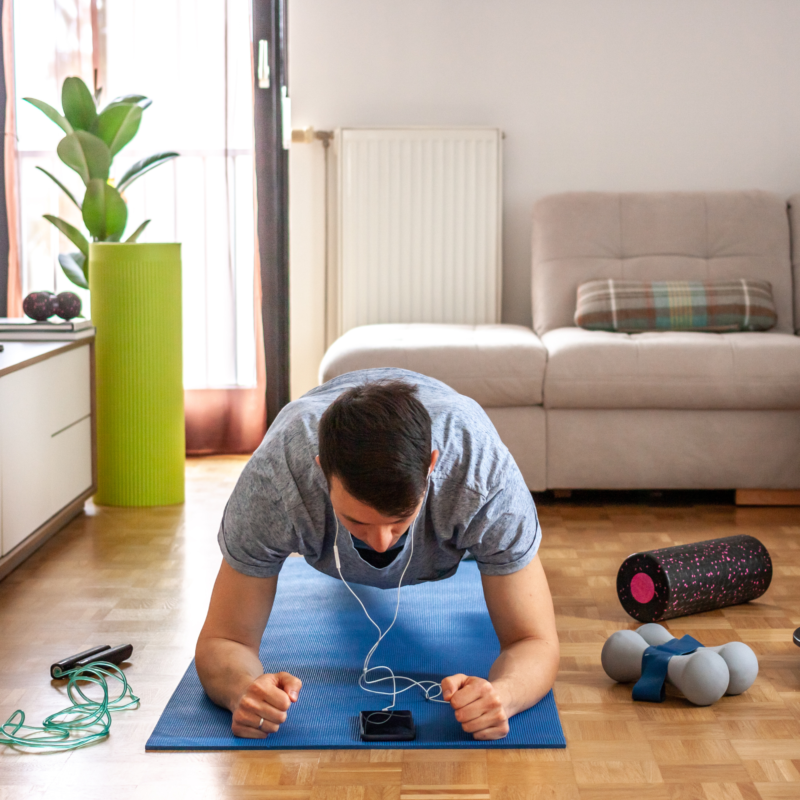Fibromyalgia is a poorly understood syndrome, affecting about 2% of the population. It’s a condition that causes diffuse muscle aches, stiffness, and fatigue.
It can strike either gender, but 80 to 90% of people with fibromyalgia are female and many also suffer from sleep problems and brain fog.
However, one of the most incapacitating symptoms is the generalized aches and muscle discomfort so common with fibromyalgia.
For some, these symptoms make it impossible to do the things they enjoy or even hold down a job.
Causes of Fibromyalgia
No one understands exactly what causes fibromyalgia.
One theory is the body’s pain centre becomes sensitized so that people with this condition feel pain in cases where a normal person would not.
Some people with fibromyalgia have a history of an injury or trauma that seems to trigger the onset of fibromyalgia symptoms.
In fact, severe physical or mental stress may be a trigger for some people.
There is likely a genetic component too since fibromyalgia is more common in certain families.
Physicians make the diagnosis of fibromyalgia by checking how patients respond to pressure on 18 different trigger points.
If the doctor presses on an area and the patient feels pain, that trigger point is positive.
To make a diagnosis of fibromyalgia, 11 out of 18 trigger points must be positive.
Most people without fibromyalgia won’t experience pain with pressure on these points.
What about treatment?
Some physicians prescribe prescription medications, such as antidepressants, anti-seizure medications, and pain relievers for fibromyalgia, but all of these prescriptions have side effects.
What if there was a safer and still effective approach to easing the symptoms of fibromyalgia?
According to research, yoga may be a safe and effective approach for easing the symptoms of fibromyalgia.
What Research Shows about Yoga and Fibromyalgia
Could yoga be a safer treatment for fibromyalgia?
In one study, adult women diagnosed with fibromyalgia took part in 2-hour yoga sessions for 8 weeks.
Another group that didn’t do yoga served as a control group. The sessions consisted of:
40 minutes of stretching
25 minutes of meditation
10 minutes of controlled breathing exercises
During the remainder of the sessions, the participants learned how to do these sessions at home.
The results? Those who did yoga felt less pain and stiffness at the end of the 8-week study.
Their energy level had also improved.
In addition, the participants enjoyed improvements in mental outlook and mood. It’s not uncommon for people with fibromyalgia to feel depressed or lack motivation, and these symptoms were less pronounced in those who did yoga.
The control group didn’t experience any benefits.
Movement is Beneficial
Studies show that movement is beneficial for the symptoms of fibromyalgia, but yoga has an advantage in that the movements are gentle and controlled.
Since achy muscles and muscle stiffness is a common complaints of fibromyalgia sufferers, the stretching that most yoga classes emphasize helps lengthen the muscles and reduce stiffness and tightness.
Yoga may also be beneficial because it’s a mindfulness practice.
In the study, the participants also meditated and performed controlled breathing.
This may help alleviate the depression and mood changes that fibromyalgia sufferers experience.
Exercise that combines stretching and mindfulness would seem to offer advantages.
Yoga as a Fibromyalgia Treatment
With so few effective treatments for fibromyalgia, other than medications that only modestly ease symptoms, yoga has a lot going for it.
Not only does yoga stretch out achy, stiff muscles, but the mindfulness nature of it may also subdue the body’s stress response.
One precaution: There are many types of yoga and some of the more strenuous yoga poses may not be beneficial for people with fibromyalgia.
As Shoosh Lettick Crotzer, who authored the book Yoga for Fibromyalgia, points out, it’s important to find an approach that works for the individual.
For most, starting with less strenuous and demanding poses is a prudent approach.
There’s always the opportunity to push a little harder as symptoms improve.
Yoga also teaches proper breathing.
That’s important since breathing too shallowly and quickly affects blood pH in a way that can trigger anxiety and the release of stress hormones like cortisol that cause mood disturbances.
The best yoga instruction for fibromyalgia sufferers would focus on all three aspects: stretching, meditation, and breathing.
One approach would be to find a yoga class that specializes in people with fibromyalgia and those who have chronic pain.
The Bottom Line
Yoga is good therapy for fibromyalgia: it stretches stiff, achy muscles and helps reduce the body’s stress response.
If you can manage fibromyalgia without medications, it’s safer and less expensive too.
Contrary to popular belief, movement is effective for easing fibromyalgia symptoms, and yoga can be one of the gentler forms of movement.
References:
Medscape.com. “Yoga Eases Fibromyalgia Pain”
PracticalPainManagement.com. “11 Fibromyalgia Facts and Tips”
YogaJournal.com. “Yoga for Fibromyalgia & Chronic Pain”
Mayo Clinic.”Fibromyalgia”




